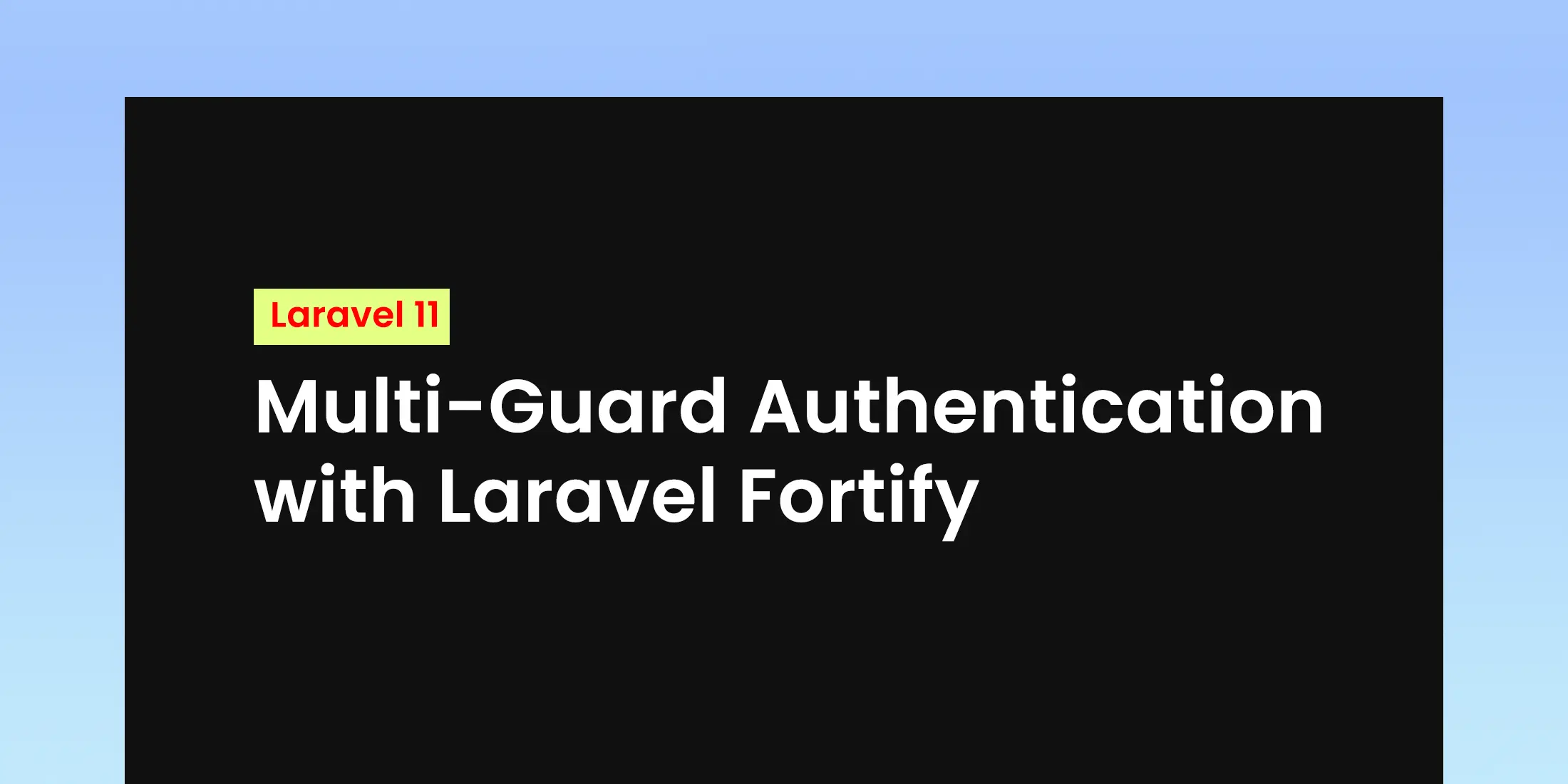
How to Add Two-Factor Authentication (2FA) in Laravel Fortify
In this step-by-step guide, I’ll learn the through the process of enabling Two-Factor Authentication in Laravel Fortify. In this tutorial, we’ll be add 2FA in Laravel application, adding an extra layer of protection for your users.
Install Laravel Fortify
composer require laravel/fortify
php artisan vendor:publish --provider="Laravel\Fortify\FortifyServiceProvider"
php artisan migrate
Ensure Fortify is registered in bootstrap/providers.php:
// bootstrap\providers.php
return [
App\Providers\AppServiceProvider::class,
App\Providers\FortifyServiceProvider::class,
];
Set Up 2FA with Fortify
Step 1: Add Columns for 2FA
Fortify requires two columns in the users table for 2FA:
-
two_factor_secret: Stores the secret key for 2FA.
-
two_factor_recovery_codes: Stores recovery codes.
php artisan make:migration add_two_factor_columns_to_users_table --table=users
Update the migration:
public function up()
{
Schema::table('users', function (Blueprint $table) {
$table->text('two_factor_secret')->nullable();
$table->text('two_factor_recovery_codes')->nullable();
});
}
Run the migration:
php artisan migrate
Step 2: Enable 2FA in User Model
Update the User model to use the Laravel\Fortify\TwoFactorAuthenticatable trait:
use Laravel\Fortify\TwoFactorAuthenticatable;
class User extends Authenticatable
{
use TwoFactorAuthenticatable;
// Other traits...
}
Step 3: Configure Fortify
Enable the two-factor-authentication feature in the features array:
'features' => [
Features::registration(),
Features::resetPasswords(),
// Features::emailVerification(),
Features::updateProfileInformation(),
Features::updatePasswords(),
// Enable the two-factor-authentication feature
Features::twoFactorAuthentication([
'confirm' => true,
'confirmPassword' => true,
// 'window' => 0,
]),
],
Set Up Views and Routes
Activate Two-Factor Authentication
we need to send a POST request to /user/two-factor-authentication, which is handled by Fortify.
<form class="d-inline" action="/user/two-factor-authentication" method="POST">
@csrf
<button class="btn btn-primary" type="submit">Activate 2FA</button>
</form>
Next, you should display the two factor authentication QR code for the user to scan into their authenticator application.
Scan QR Code to Set Up Two-Factor Authentication
In order to validate Two Factor Authentication, please scan this QR code with Google Authenticator or Duo and enter the validation code below :
<div class="mb-4">
{!! auth()->user()->twoFactorQrCodeSvg() !!}
</div>
<div class="row justify-content-center">
<form action="{{ route('two-factor.confirm') }}" method="POST">
@csrf
<label for="code" class="form-label">Code</label>
<div class="input-group mb-3">
<input class="form-control" id="code" type="text" name="code" required />
<button class="btn btn-primary" type="submit">Validate 2FA</button>
</div>
</form>
</div>
Route::post('/two-factor-confirm', function (Request $request) {
$confirmed = $request->user()->confirmTwoFactorAuth($request->code);
if (!$confirmed) {
return back()->withErrors('Invalid Two Factor Authentication code');
}
return back();
})->name('two-factor.confirm');
Disable Two-Factor Authentication To turn off two-factor authentication, your app needs to send a DELETE request to the /user/two-factor-authentication endpoint. Keep in mind, Fortify requires the user to confirm their password before making this request.
<form class="d-inline" action="/user/two-factor-authentication" method="POST">
@csrf
@method('DELETE')
<button class="btn btn-danger" type="submit">Disable 2FA</button>
</form>


